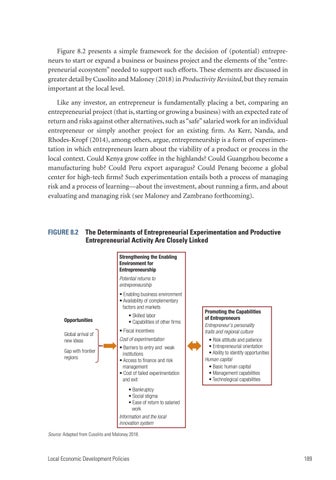Figure 8.2 presents a simple framework for the decision of (potential) entrepreneurs to start or expand a business or business project and the elements of the “entrepreneurial ecosystem” needed to support such efforts. These elements are discussed in greater detail by Cusolito and Maloney (2018) in Productivity Revisited, but they remain important at the local level. Like any investor, an entrepreneur is fundamentally placing a bet, comparing an entrepreneurial project (that is, starting or growing a business) with an expected rate of return and risks against other alternatives, such as “safe” salaried work for an individual entrepreneur or simply another project for an existing firm. As Kerr, Nanda, and Rhodes-Kropf (2014), among others, argue, entrepreneurship is a form of experimentation in which entrepreneurs learn about the viability of a product or process in the local context. Could Kenya grow coffee in the highlands? Could Guangzhou become a manufacturing hub? Could Peru export asparagus? Could Penang become a global center for high-tech firms? Such experimentation entails both a process of managing risk and a process of learning—about the investment, about running a firm, and about evaluating and managing risk (see Maloney and Zambrano forthcoming).
FIGURE 8.2
The Determinants of Entrepreneurial Experimentation and Productive Entrepreneurial Activity Are Closely Linked Strengthening the Enabling Environment for Entrepreneurship Potential returns to entrepreneurship • Enabling business environment • Availability of complementary factors and markets
Opportunities Global arrival of new ideas Gap with frontier regions
• Skilled labor • Capabilities of other firms • Fiscal incentives Cost of experimentation • Barriers to entry and weak institutions • Access to finance and risk management • Cost of failed experimentation and exit
Promoting the Capabilities of Entrepreneurs Entrepreneur’s personality traits and regional culture • Risk attitude and patience • Entrepreneurial orientation • Ability to identify opportunities Human capital • Basic human capital • Management capabilities • Technological capabilities
• Bankruptcy • Social stigma • Ease of return to salaried work Information and the local innovation system Source: Adapted from Cusolito and Maloney 2018.
Local Economic Development Policies 189

